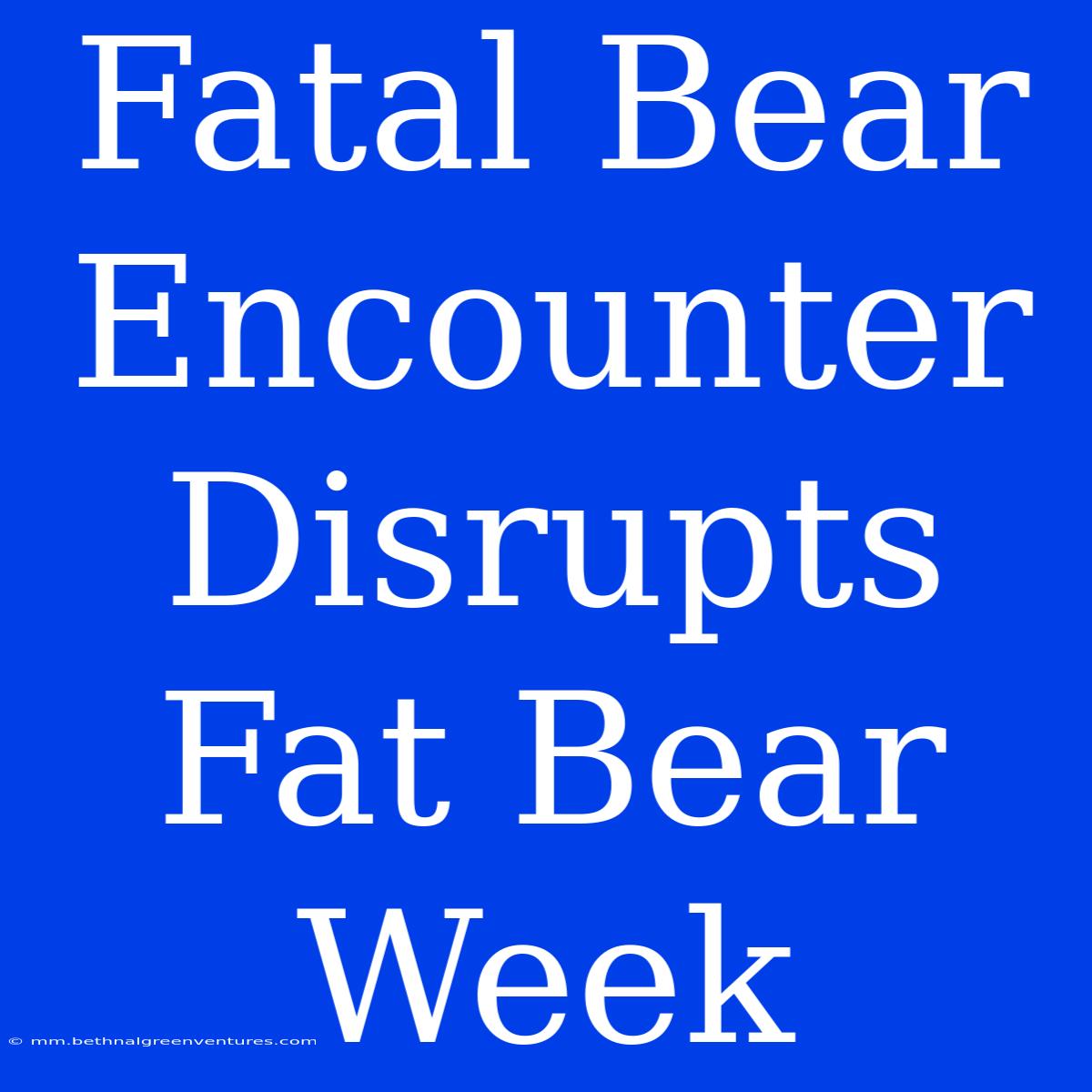Fatal Bear Encounter Disrupts Fat Bear Week: A Tragic Loss and Lessons Learned
How can a celebration of wildlife turn into a tragedy? The recent fatal bear encounter during Fat Bear Week in Alaska's Katmai National Park raises crucial questions about safety, human behavior, and the delicate balance between wildlife viewing and conservation.
Editor's Note: A tragic incident during the 2023 Fat Bear Week festivities underscores the importance of responsible wildlife viewing and respecting the boundaries of wild animals.
This heartbreaking incident highlights the need for constant vigilance and education regarding wildlife encounters. While Fat Bear Week is a beloved event showcasing the incredible resilience and power of nature, it's vital to remember that we are guests in their world.
Analysis: This article delves into the circumstances surrounding the encounter, analyzing the potential contributing factors and examining best practices for safe wildlife viewing. We'll explore the crucial role of responsible tourism and the importance of understanding bear behavior, highlighting the impact of human activity on wildlife and the delicate ecosystem of Katmai National Park.
Key Takeaways of the Fatal Bear Encounter:
| Takeaway | Explanation |
|---|---|
| Unpredictable Bear Behavior: | Bears are wild animals with inherent unpredictable tendencies. |
| Respecting Boundaries: | Maintaining a safe distance and avoiding actions that could provoke a bear is paramount. |
| Importance of Wildlife Viewing Ethics: | Understanding and adhering to park regulations and guidelines ensures both human and animal safety. |
| Impact on Human-Wildlife Interactions: | This incident underscores the importance of responsible tourism and understanding animal behavior. |
Fat Bear Week and Wildlife Viewing
Fat Bear Week is a celebrated annual event showcasing the incredible fat reserves accumulated by brown bears in preparation for winter hibernation. While the event attracts thousands of viewers worldwide, it is crucial to remember that bears are wild animals with complex social structures and survival instincts.
Respecting Boundaries: Safe Wildlife Viewing Practices
Understanding Bear Behavior:
Bears are powerful and unpredictable animals. Recognizing their cues, such as body language, vocalizations, and movements, is essential for maintaining a safe distance and ensuring a peaceful experience.
- Facets:
- Body Language: Bears display various cues, such as raised hackles, flattened ears, and rapid breathing, indicating potential agitation.
- Vocalizations: Growls, hisses, and snorts are warning signs, prompting individuals to retreat.
- Movement: Rapid movements, pawing at the ground, and aggressive charges are clear indicators of danger.
Maintaining a Safe Distance:
It is crucial to observe bears from a safe distance, minimizing the risk of encounters and potential conflict.
- Facets:
- Recommended Distance: Always maintain a safe distance of at least 100 yards (91 meters) from bears, and a much greater distance if the bear appears agitated.
- Binoculars and Telephoto Lenses: These tools allow for observing bears from a distance, minimizing the risk of disrupting their behavior.
- Natural Barriers: Utilize natural barriers like rivers, rocks, or trees to increase the distance between yourself and the bear.
Impact on Human-Wildlife Interactions
The tragic incident at Fat Bear Week serves as a stark reminder of the potential consequences of improper wildlife viewing practices.
- Further Analysis:
- Human-Wildlife Conflict: This incident highlights the need for increased awareness and education regarding human-wildlife interactions.
- Safety Measures: National parks are implementing stricter guidelines and regulations to ensure the safety of both humans and wildlife.
FAQs about Fatal Bear Encounters
Q: How can I stay safe when viewing bears in the wild?
A: Always maintain a safe distance, use binoculars, and observe the bear's behavior.
Q: What should I do if I encounter a bear?
A: Remain calm, speak in a calm voice, and slowly back away. Do not run, as this may trigger a chase response.
Q: Are there any other safety tips for wildlife viewing?
A: Follow park regulations, use designated trails, store food properly, and make yourself aware of your surroundings.
Tips for Responsible Wildlife Viewing
- Be Prepared: Research the area, understand park regulations, and pack appropriate gear like binoculars and bear spray.
- Stay on Trails: Stick to designated trails and avoid venturing off-trail to minimize disturbance.
- Make Noise: Talk, sing, or clap occasionally to let bears know of your presence.
- Do not Feed: Avoid feeding or approaching wildlife, as this can lead to habituation and dangerous encounters.
- Dispose of Trash Properly: Food waste can attract bears, so properly dispose of garbage in designated bins.
Conclusion
The tragic incident during Fat Bear Week serves as a somber reminder of the importance of respecting wildlife and prioritizing safety. By promoting responsible wildlife viewing practices and fostering a deeper understanding of animal behavior, we can ensure the preservation of these magnificent creatures and continue to enjoy the beauty and wonder of the natural world. This incident highlights the delicate balance between human activity and wildlife conservation, underscoring the importance of careful observation and responsible engagement with nature.
